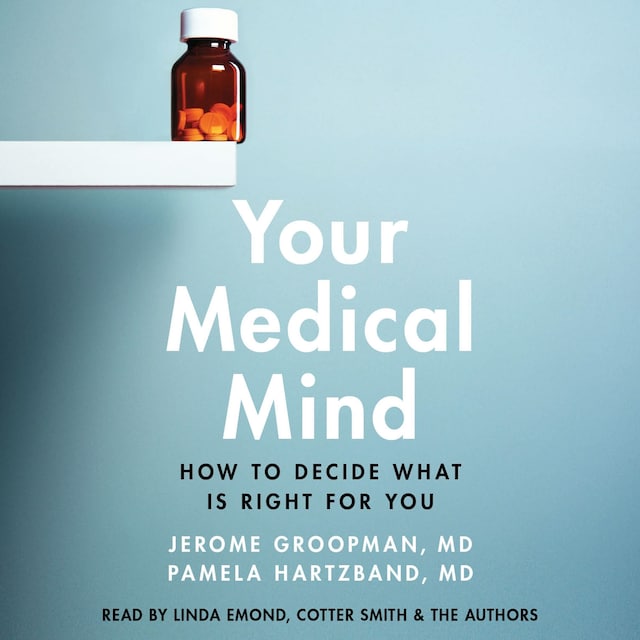
Your Medical Mind
How to Decide What is Right for You
Beskrivning av boken
Cutting through the confusion caused by the healthcare system, the media, and gaps in our reasoning, the bestselling author of How Doctors Think gives listeners essential tools for making the medical decisions that best suit their own needs.
“This important and riveting book could change—and perhaps even save—your life.”
—Daniel Gilbert, author of Stumbling on Happiness
Making the right medical choices is harder than ever. Whether we’re deciding to take a cholesterol drug or
choosing a cancer treatment, we are overwhelmed by information from all sides: our doctors’ recommendations, dissenting expert opinions, confusing statistics, conflicting media reports, the advice of friends, claims on the Internet, and a never-ending stream of drug company ads. Your Medical Mind shows us how to chart a clear path through this sea of confusion.
Drs. Groopman and Hartzband reveal that each of us has a set of deeply rooted beliefs whose profound
influence we may not realize when we make medical decisions. How much trust we place in authority figures, in
statistics or in other patients’ stories, in technology or in natural healing, and whether we seek the most or the
least treatment—all are key factors that shape our choices. Recognizing our preferences and the external factors that might lead our thinking astray can make a dramatic, even lifesaving, difference in our medical decision making. When conflicting information pulls us back and forth between options, when we feel pressured by doctors or loved ones to make a particular choice, or when we have no previous experience to guide us through a crisis, Your Medical Mind will prove to be an essential companion.
The authors interviewed scores of patients and draw on research and insights from doctors, psychologists, economists, and other experts to help explain the array of forces that can aid or impede our
thinking. They show us the subtle strategies drug advertisers use to influence our choices. They unveil
the extreme—sometimes dangerously misleading—power of both narratives and statistics. And they
help us understand how to improve upon a universal human shortcoming—assessing the future impact
of the decisions we make now.


